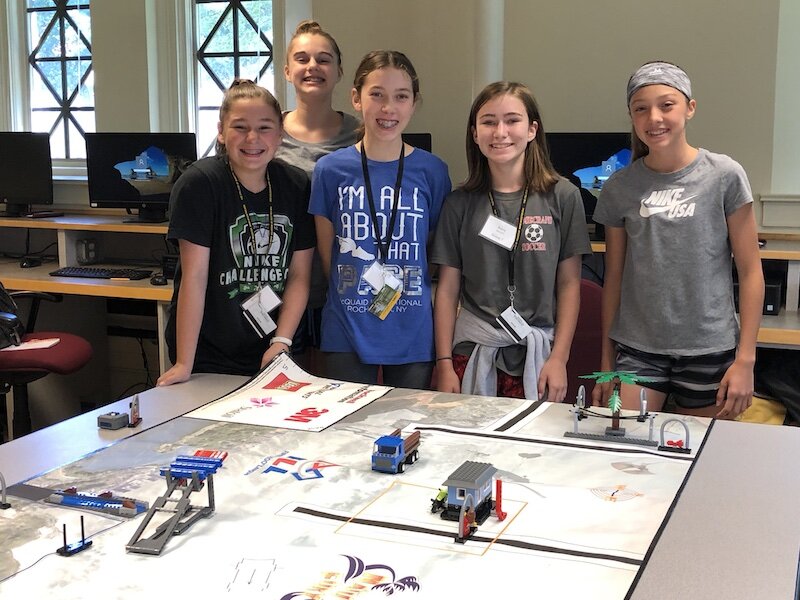Girls Wise-Up to Science
For one week in June, classrooms and labs in The College of Wooster’s state-of-the-art life science center are filled with middle school girls totally engrossed in science. One day’s agenda alone involves extracting DNA from samples of their saliva; measuring the metabolism of different size animals; testing the four basic types of chemical reactions; and building models to discover how mass affects acceleration.
The rising 8th graders are participants in the Buckeye Women in Science Engineering, and Research (B-WISER) Institute, a six day residential program that brings together girls interested in science from schools across the state. Each day the campers experiment hands on with topics in biology, chemistry, geology, physics, model robotics, and LEGO robotics. They work collaboratively throughout the week to conduct experiments, hypothesize, collect and analyze data, draw conclusions, and think about how the results relate to everyday life. For many, it is their very first experience working in a laboratory setting.
B-WISER was founded in 1990 to provide an exciting summer science experience for rising 8th grade girls, explains Project Director Mary Kilpatrick, who is a retired adjunct professor in chemistry at the college and has been involved with the program for more than a dozen years. It has been held at the College of Wooster every year since.
In response to demand, an alumnae camp was created shortly thereafter for rising ninth graders who had participated the previous year. Its curriculum focuses on studies in environmental science, food science, microbiology, computer science, and forensic chemistry. Twenty-nine years later the “spirit” of B-WISER remains the same as it was during year one.
“This process of deep learning gives girls an idea of what science is all about and develops confidence in each girl in her own ability to do science,” explains Ms. Kilpatrick. She expects this boost in confidence will result in more girls pursuing science classes during their educational careers and lead to an increase in women employed in STEM fields.
Instructors at the camp are current or retired female science teachers from districts around the state. They actively engage the girls in experiments they design and serve as role models of women involved in science-related work.
Cristin Hagans, who teaches high school science in northwest Ohio’s Millcreek-West Unity Schools, served as lead teacher in the biology lab at B-WISER this June. She says the girls love the hands-on experiments because it allows them to actually apply the information they might learn from standard worksheets in a lab setting. During one such experiment, they investigated the cellular aerobic respiration of mice and hamsters to determine if the size of the rodent affects its oxygen usage. What they ultimately learned is the smaller the organism the higher the metabolism.
“With all females, everyone here is very supportive,” she remarks, pointing out how the girls quickly connect with each other as they work together. “Everyone here loves it; the girls can really grow in an atmosphere like this.”
“I hope the girls have lots and lots of fun; that’s our ultimate goal,” says Beverly Stambaugh, a teacher in the Fairborn City Schools who served this summer as lead facilitator in the LEGO robotics session. “I also want them to learn something new. I gave them a challenge at the beginning of the week and without giving them really much of anything else, I said: ‘Solve the problem.’ This gives them the opportunity to think, to be creative, to work as a team, and to say, ‘Oh, that didn’t work, but it’s okay. Let’s try something else.’
“They are developing that grit and perseverance to stick with it even when things are going really, really bad and they can’t get things to work,” she adds. “These are lifelong skills that they have to know to be successful wherever they go.”
While deeper learning is a predictable outcome of the many different lab experiences, B-WISER also contributes markedly to excellent teaching. Assisting the lead instructors are a half dozen educators who are certified to teach science and are interested in developing more student-centered, inquiry-based teaching methods. Countless students eventually benefit from the trove of scientific experiments, lab organization ideas, problem solving activities, and cooperative learning activities these teachers take back to their classrooms across the state.


